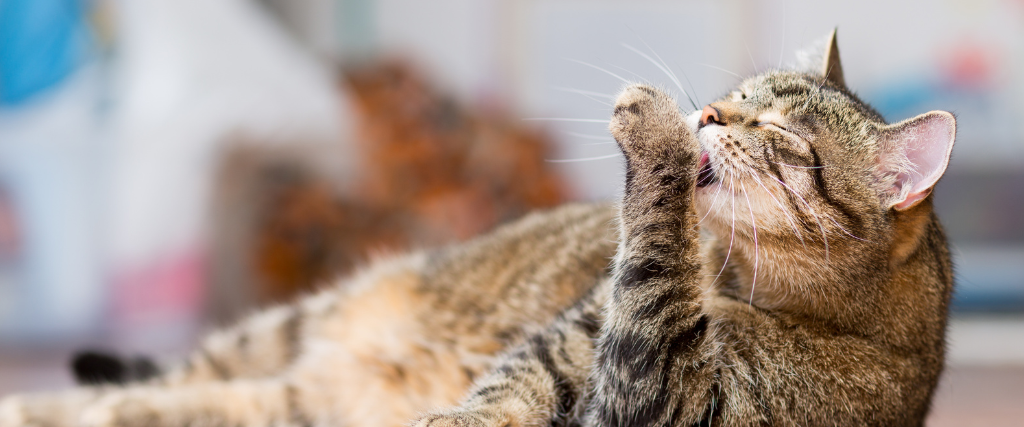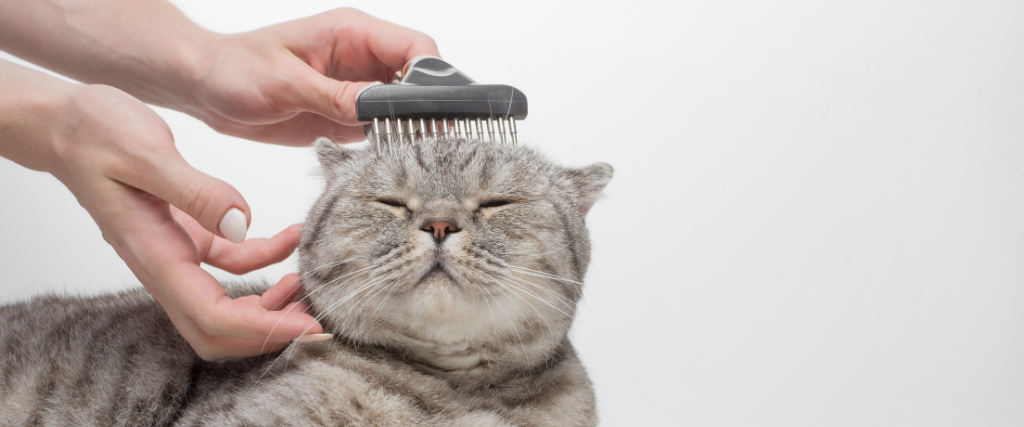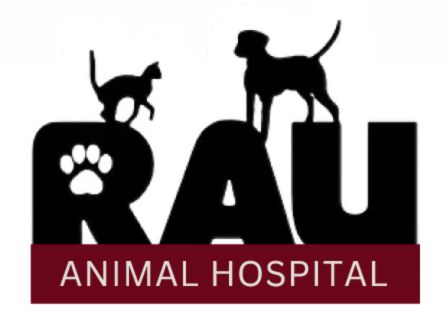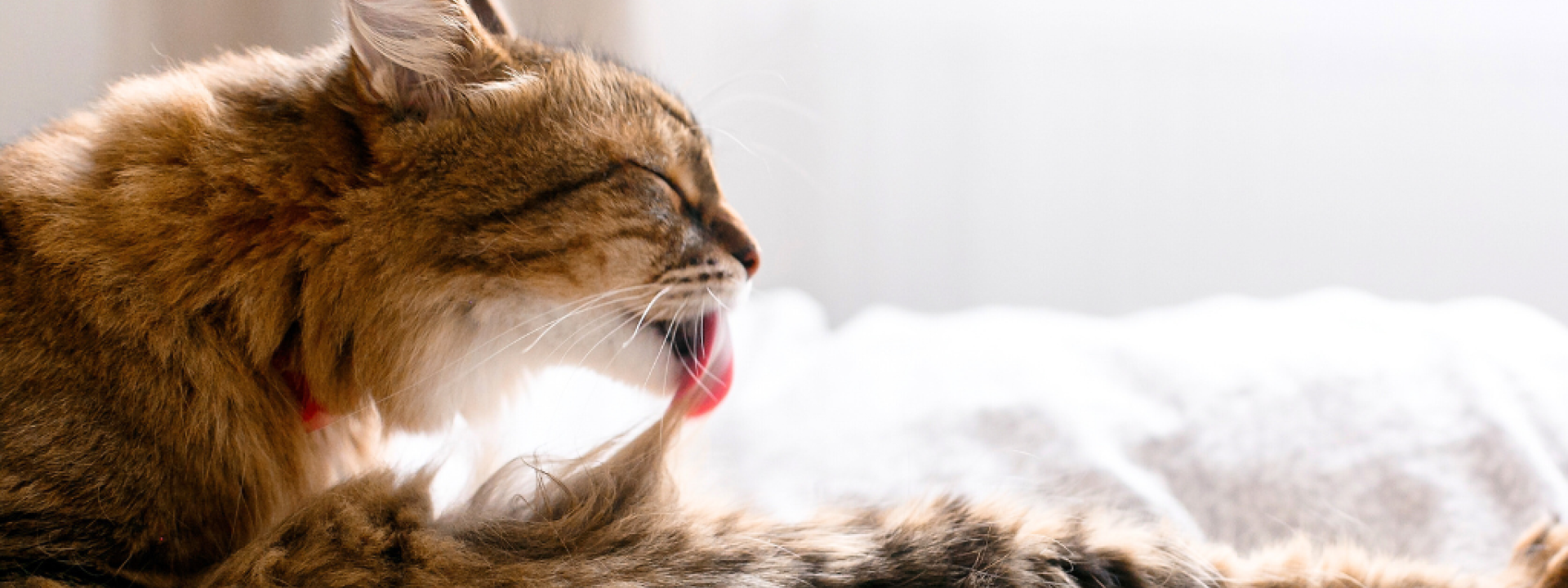Overgrooming in cats is something that a lot of owners discover by accident or it’s found by a veterinarian on a cat’s physical exam much to the owner’s surprise.
What Is Overgrooming In Cats?
In cases of overgrooming, the hair shaft is broken and not completely missing. The broken hair shafts can make it look like the hair is missing, but upon closer inspection, it looks more like “peach fuzz”. The most common place where overgrooming occurs is on the cat’s stomach near the hind legs and sometimes on the insides of the hind legs.
What Are The Causes Of Overgrooming In Cats?
Causes of overgrooming include stress, psychological issues, allergies, fungal or parasitic infection, underlying endocrine disease, or some other underlying medical issue.
Overgrooming due to fungal, bacterial, or parasitic infections can be ruled either in or out with testing. Testing may include cultures, cytology, and skin scrapings. These tests can help rule out diseases such as mites, mange, ringworm, or bacterial infection. If any of these tests are positive, then your veterinarian will prescribe appropriate treatment and the issue will hopefully resolve.
Endocrine diseases, such as hyperthyroidism, can be ruled in or out with bloodwork. If an underlying issue is found, medication may be prescribed to correct the problem. Other underlying diseases may be more difficult to find, but bloodwork can be useful in ruling underlying issues in or out. Treatment would depend on what issue is found.

Allergies can be more difficult to diagnose since there could be food and/or environmental factors involved. Food allergies can be ruled in or out with a prescription food trial. A food trial often involves a novel protein diet or a diet where the ingredients are made so small that the body can’t recognize the source. This is called a hydrolyzed protein diet. Both hydrolyzed and novel protein diets are made under strict conditions where there is no chance for cross-contamination with other ingredients. A food trial with one of these diets usually occurs for 12 weeks. During this time the cat can’t be fed any other foods or treats. If the cat gets into something that is not the prescribed diet, the food trial is set back to day one. If the cat’s clinical signs improve on the food trial, then a food allergy is most likely the underlying cause of the hair loss. The cat will have to stay on the special food for life. If no improvement happens by the time the food trial is over, then another cause needs to be investigated.
For environmental allergies, allergy testing needs to be done to rule them in or out. If the cat has a positive response to any of the environmental allergens, a special serum can be developed for the cat. This is often given as an injection over a set period of time. The serum helps to build the cat’s immune system up towards the allergen in question. Over time the cat should become less sensitive to the allergen.
Stress and psychological issues can also be a cause of overgrooming in cats and are usually the underlying cause in most cases that I see. Overgrooming can start due to skin irritation and then become a habitual or obsessive-compulsive issue for some cats. In other cases, a stressor within the household may cause the start of overgrooming. It can be due to an addition of a new human or pet to the family. Or it can be some other factor that is making the cat unhappy. Often the root of the issue is not clear. Overgrooming due to psychological or stress issues can often be managed with either short-term or long-term anti-anxiety medications.

Overgrooming in most cases is treatable. It may take some detective work to find the underlying reason, but once the cause is known, overgrooming can often be corrected.

